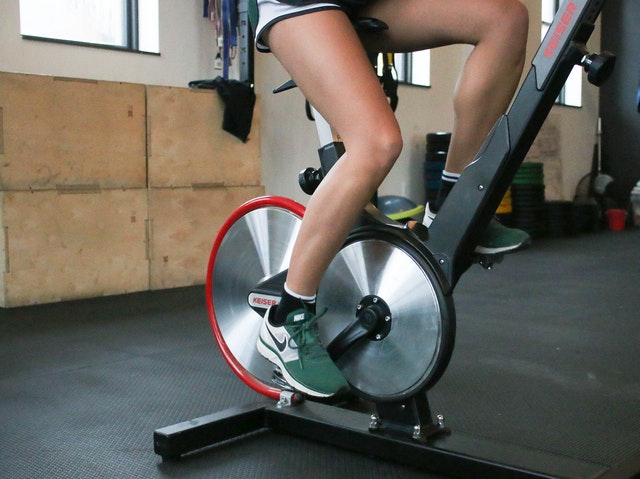
What is HIIT and Why Should You Try it?
HIIT refers to the concept recommended by Dr. Tabata during his experimental research on Olympic athletes.
As per the good doctor, you can increase the efficiency and the energy output of any exercise, (the research incorporated cycling workouts), and shorten the time to reap the same results, by incorporating highly intense interval training.
The hype around HIIT also invites a lot of confusion and misconceptions that inevitably circle around and become common mistakes people make when planning out their regimens.
Regardless, HIIT has proved to be one of the best training routines that are effective in reducing workout time as well as increasing the overall productivity of a workout.
Even though it’s not something you can perform on a daily basis without giving yourself substantial time to recover, HIIT continues to be the most preferred and appreciated type of training.

HIIT Cardio Workouts and Benefits
Other than the fact that it saves almost half the time you would spend on regular workouts to get the same results, HIIT surprisingly has more benefits to offer.
Mixing bike, treadmill, with and without weights-workouts for your whole body can result in what scientists refer to as EPOC (Excess Post-exercise Oxygen Consumption).
What this means is that HIIT allows your body to increase the rate at which it’s consuming oxygen (and thus calories and energy), even when you’re done with your workout.
This calorie-burnout at rest that lasts for at least 48 hours can ensure that you keep on burning fats and carbs through your recovery periods.
Apart from this, HIIT has also proved itself effective in reducing the risks of cardiovascular diseases.
Compared with regular cardio workouts, HIIT treadmill and bike workouts offer you the same result in a lesser amount of time but that doesn’t mean that you’re necessarily going for high-intensity and high impact, meaning there are low impact HIIT exercises as well.

Your Guide To HIIT Bike Workouts
HIIT is more sophisticated than just sprinting till you can’t breathe or lifting weights until you can’t.
Not only intervals, but HIIT workouts also require carefully adjusted bursts of highly intense energy outputs that are organized in specific patterns.
HIIT bike workouts require a stationary bike as it’s very difficult to find a very long straight road for cycling without intrusions, hurdles, turns or traffic.
Inevitably, if you go out cycling, unless you’re on a highway with no traffic and no gravel, you’re not going to be able to carry out an efficient HIIT bike workout.
This is because, during this workout, you will need to make sure that you’re:
- Constantly cycling
- Observing the total time as well as the duration of your intense and steady-state cycling sessions
- Organizing the pace and intensity at which you’re cycling while increasing the resistance (if the bike comes with such a feature, otherwise, just increase the speed or the time)
While it’s not impossible to do this outdoors on E-bikes, it’s not that convenient for everyone and thus, is recommended for stationary bikes and cycling machines.
As you’ll observe in the following example of a HIIT bike workout, you will be covering a wide range of speeds and paces during a 10-minute workout.
That’s because, with HIIT, you tend to space out the highly intense sessions in between low and medium-intensity exercises.
HIIT Bike Workout
If you’re thinking of going for a 20 minute HIIT bike workout, here’s how it would go:
Firstly, you’ll start off with a warmup that will last for 3 minutes. This will involve you slowly increasing the pace of your bike from 0 to 65% of your maximum heart rate (MHR).
Now, slowly increase the pace to reach 75-80% of your MHR and go for at least 30 seconds.
Slow back down to 65% and stay at the same pace for 30 seconds.
Repeat the above two steps for at least 15 minutes.
For cooling down, bring the pace back to 65% and slow down to 60% for 2 minutes and end your workout.

Your Guide To HIIT Treadmill Workouts
Running is undoubtedly one of the most beneficial exercises.
Treadmills are almost always preferable over running outdoors because of two reasons.
Firstly, not everyone has a scenic fresh environment to run in when they step outdoors.
Since many of us live in metropolitan hubs in the middle of industrial cities, it’s difficult to find a peaceful atmosphere as well as hilly trails to have inclined surfaces.
Sure, you can run around the block anytime you want but there are many who prefer doing their workouts indoors.
Secondly, treadmills pose little to no risk of injuries to your feet regardless of how long you’re working out.
The soft surface specifically designed to give you a comfortable experience also comes with top-tier elevation mechanisms that can give you the inclination you need to increase the intensity of your workout.
Incorporating HIIT on a treadmill will work best if the treadmill comes with elevation and speed adjustment options.
This will allow you to easily organize your workout routine into sections of low-speed but high-incline and vice versa as well as normal-angle intense sprints.
HIIT Treadmill Workout
To do a HIIT treadmill workout, you will need a treadmill and adequate workout joggers to have the utmost efficiency from this routine.
Here’s what you need to know about the routine:
Speed = 1 – 10, with 3 being the normal walking pace and 10 being all-out sprints
Duration= Time periods to stay at a designated speed
|
Time Period |
Phase |
Duration |
Speed |
|
0:00 – 1:00 |
Normal Walk |
1 minute |
3.0 |
|
1:00 – 1:30 |
Sprint |
30 seconds |
6.5 – 9.0 |
|
1:30 – 2:30 |
Normal Walk |
1 minute |
3.0 |
|
2:30 – 3:00 |
Sprint |
30 seconds |
6.5 – 9.0 |
|
3:00 – 4:00 |
Normal Walk |
1 minute |
3.0 |
|
4:00 – 4:30 |
Sprint |
30 seconds |
6.5 – 9.0 |
|
4:30 – 5:30 |
Normal Walk |
1 minute |
3.0 |
|
5:30 – 6:00 |
Sprint |
30 seconds |
6.5 – 9.0 |
|
6:00 – 7:00 |
Normal Walk |
1 minute |
3.0 |
|
7:00 – 7:30 |
Sprint |
30 seconds |
6.5 – 9.0 |
|
7:30 – 8:30 |
Normal Walk |
1 minute |
3.0 |
|
8:30 – 9:00 |
Sprint |
30 seconds |
6.5 – 9.0 |
|
9:00 – 10:00 |
Normal Walk |
1 minute |
3.0 |
|
10:00 – 10:30 |
Sprint |
30 seconds |
6.5 – 9.0 |
|
10:30 – 11:30 |
Normal Walk |
1 minute |
3.0 |
|
11:30 – 12:00 |
Sprint |
30 seconds |
6.5 – 9.0 |
|
12:00 – 13:00 |
Normal Walk |
1 minute |
3.0 |
|
13:00 – 13:30 |
Sprint |
30 seconds |
6.5 – 9.0 |
|
13:30 – 14:30 |
Normal Walk |
1 minute |
3.0 |
|
14:30 – 15:00 |
Sprint |
30 seconds |
6.5 – 9.0 |





Leave a reply